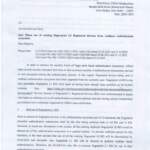What is NAV in Mutual Fund with Example?
If you’ve ever invested in mutual funds or considered doing so, you may have come across the term “Net Asset Value” or NAV. Net Asset Value is a crucial concept in the world of mutual funds, representing the per-unit value of a fund’s assets. In this article, we will delve into the meaning of NAV, its calculation method, and provide examples to help you understand its significance in mutual fund investments.
What is Net Asset Value (NAV)?
Net Asset Value (NAV) is the price at which mutual fund units are bought or redeemed by investors. It represents the total value of the fund’s assets (such as stocks, bonds, or other securities) minus its liabilities (such as expenses and management fees), divided by the total number of units outstanding. In simple terms, NAV indicates the value of each unit of the mutual fund.
Related Articles
Calculation of NAV:
The NAV of a mutual fund is calculated at the end of each business day based on the following formula:
NAV = (Total Value of Assets – Total Value of Liabilities) / Total Number of Outstanding Units
Let’s consider an example to illustrate the calculation of NAV:
Suppose a mutual fund has total assets worth $10 million and liabilities of $1 million. The total number of units outstanding is 1 million. Applying the formula:
NAV = ($10,000,000 – $1,000,000) / 1,000,000 = $9 / unit
In this example, the Net Asset Value per unit of the mutual fund is $9.
Significance of NAV:
- Unit Valuation: NAV determines the price at which investors buy or sell mutual fund units. Investors purchasing units will buy them at the prevailing NAV, and those redeeming units will receive the NAV per unit.
- Tracking Performance: NAV helps investors track the performance of their mutual fund investments. By comparing the NAV over time, investors can assess whether the fund’s value has increased or decreased.
- Assessing Fund Efficiency: NAV reflects the fund’s efficiency in managing its assets and liabilities. A consistently rising NAV may indicate a well-performing fund, while a declining NAV may warrant further evaluation.
- Mutual Fund Categories: NAV is used to categorize mutual funds as either open-ended or close-ended. Open-ended funds allow investors to buy or sell units at NAV, while close-ended funds trade at a premium or discount to NAV, based on market demand.
- Expense Calculation: NAV incorporates the expenses and fees incurred by the mutual fund, such as management fees, administrative costs, and operational charges. These expenses reduce the NAV, reflecting their impact on the fund’s overall performance.
Conclusion:
Net Asset Value (NAV) plays a pivotal role in mutual fund investing. It represents the per-unit value of a mutual fund and is calculated based on the fund’s total assets and liabilities. Understanding NAV enables investors to assess a mutual fund’s performance, track its growth, and make informed investment decisions.
While NAV provides valuable insights, it is essential to consider other factors such as the fund’s investment objectives, risk profile, historical performance, and expense ratio before investing in a mutual fund. Additionally, consulting with a financial advisor can provide personalized guidance tailored to your investment goals and risk tolerance.
Remember, NAV fluctuates daily based on the market value of the underlying assets, and it is just one aspect to consider when evaluating mutual fund investments. A comprehensive analysis of the fund’s fundamentals is crucial for making informed investment choices.














